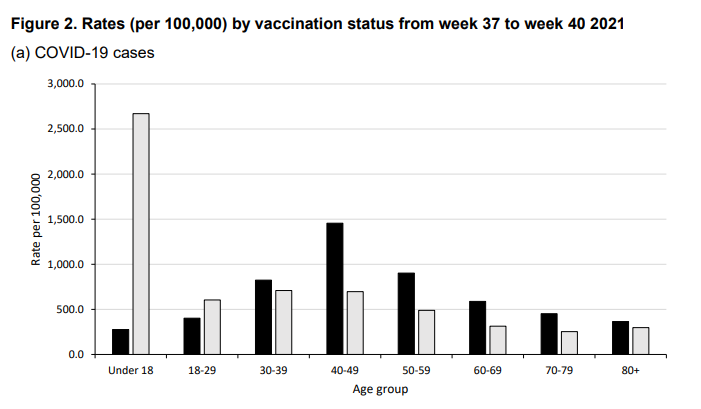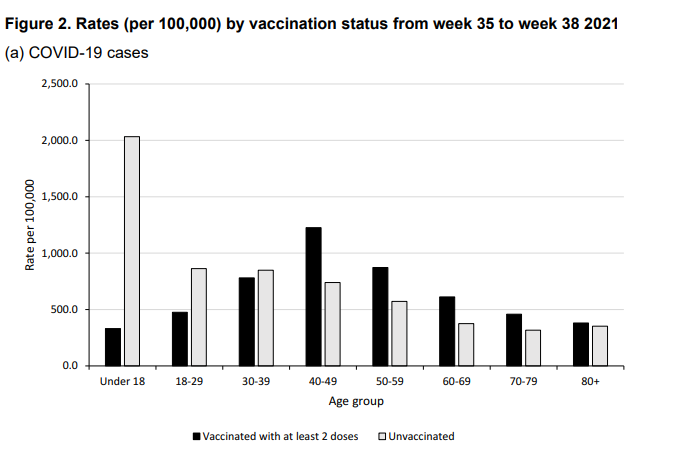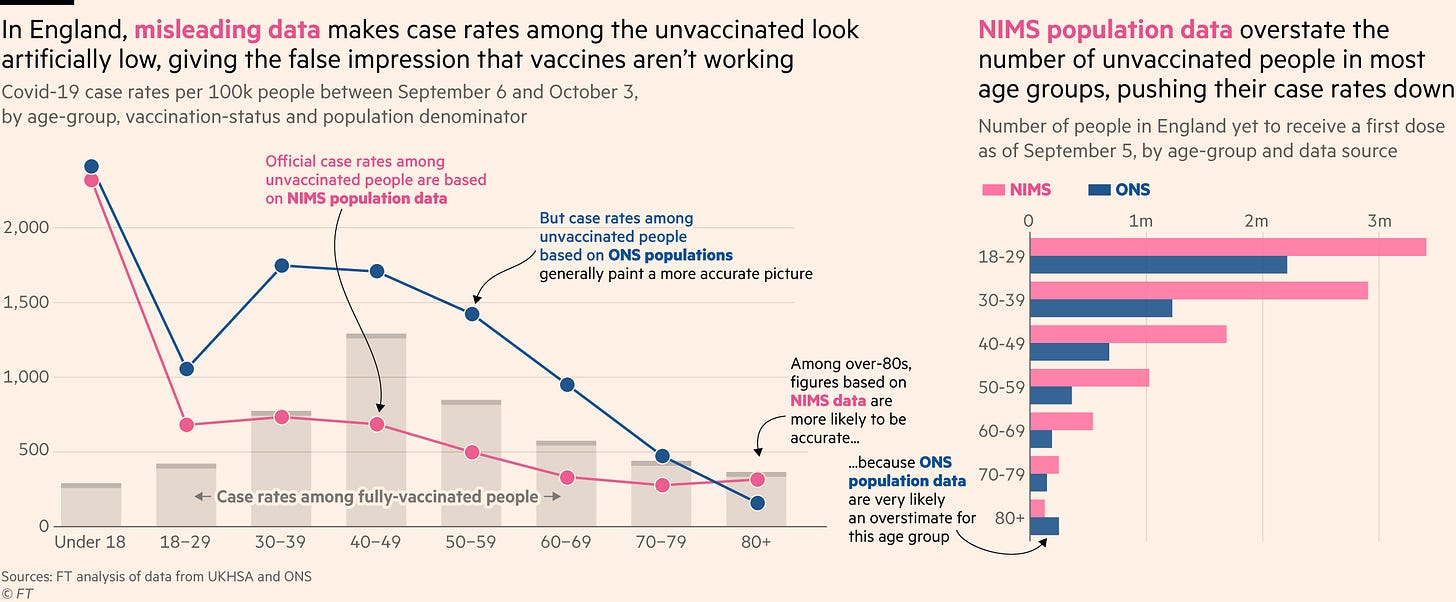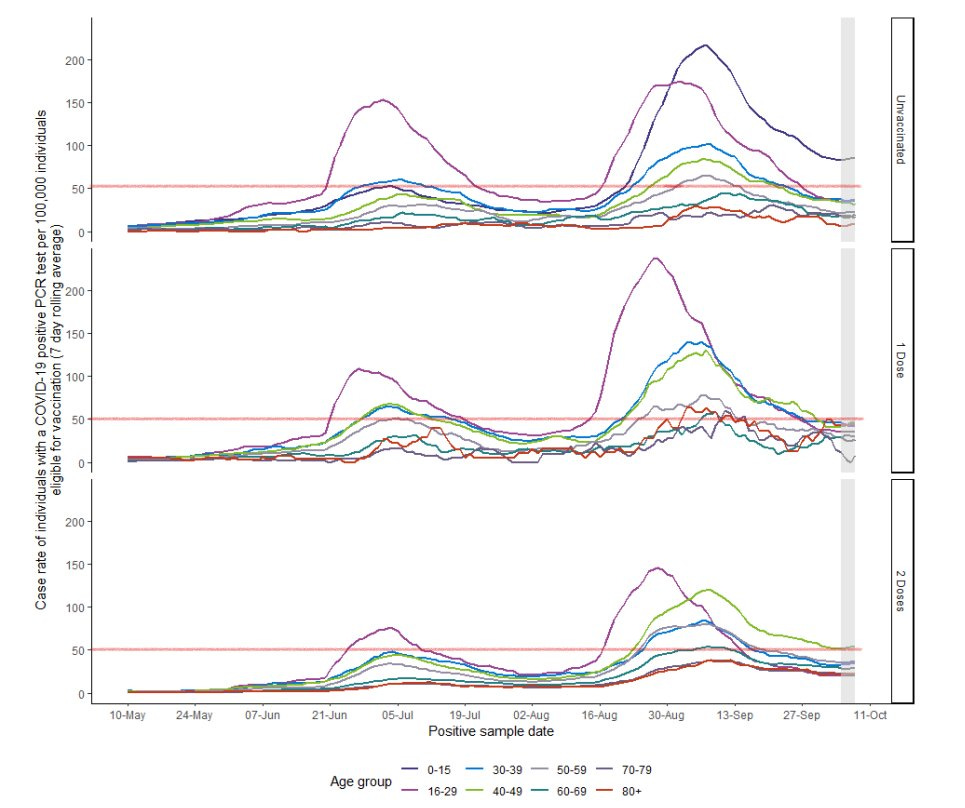The latest Public Health England vaccine surveillance report finds higher rates of infection among the fully vaccinated than in the unvaccinated in all age brackets over 30.
For the fully vaccinated aged 40–70, infections are nearly 100% higher:

These are numbers for the four weeks from 13 September to 4 October, and they are substantially deteriorated from the month prior. The same chart for cases from 30 August to 20 September, for example, looks like this:

The reports themselves have no explanation, pleading merely that this phenomenon “is likely to be due to a variety of reasons, including differences in the population of vaccinated and unvaccinated people as well as differences in testing patterns.” But the line promoted by John Burn Murdoch, a Financial Times reporter, is that this is down to a “population data glitch.”

If you use population estimates from the Office of National Statistics (=smaller numbers of unvaccinated), rather than the National Immunisation Management Service (=larger numbers of unvaccinated), it’s true that the vaccines start to look better against infection again. What’s not clear, is whether this picture is any more accurate. Nobody disputes that the NIMS data overstate the numbers of unvaccinated in some age cohorts, but we don’t know by how much, and the ONS estimates have their own problems.
The most you could say, is that vaccine efficacy against infection has faded to the point that it is beyond the ability of government statistics to measure it.
But it’s actually worse than that. Public Health Scotland publishes similar vaccine surveillance statistics based on their own data. Their most recent report shows the same trend, though less pronounced: Higher rates of infection for the unvaccinated in the 0–29 bracket, and higher rates of infection for the fully vaccinated in all ages over 30:

It’s almost like the vaccines are fading not to a baseline of zero, but to a point of negative efficacy. At any rate, vaccine fade is surely the story here: Differences in the testing of school-age children aside, this would be why the fully vaccinated youngs in Scotland and England still have lower rates of infection. They were vaccinated more recently than older age groups, and their SARS-2 antibodies have yet to vanish entirely.
In the coming month or two, the greater part of vaccinations in Europe and North America will also begin to age out of their efficacy window, as they already have in Scotland and England. This will happen directly in the depths of winter, at the height of coronavirus season.